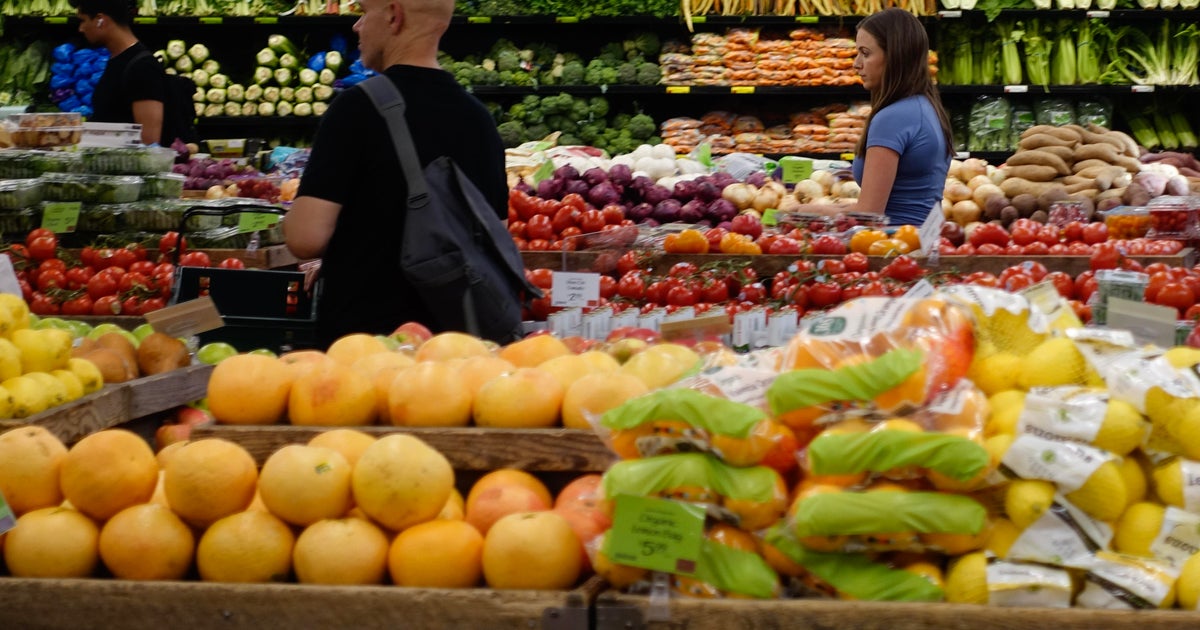Biden stimulus plan offers less help for small businesses
The Biden administration acknowledges that small businesses continue to face an "immediate crisis" because of the economic fallout from the coronavirus. Yet the American Rescue Plan — the $1.9 trillion emergency relief package that President Joe Biden helped push through Congress with Democratic lawmakers — provides far less support to small businesses than previous rounds of pandemic relief.
Direct aid to small businesses accounts for $50 billion of the $1.9 trillion plan, or just 2%. That's far lower than the two previous coronavirus relief bills that lawmakers have passed. For example, the Coronavirus Aid, Relief and Economic Security (CARES) Act in March 2020 provided nearly $400 billion — or nearly 20% of the roughly $2 trillion measure — in forgivable small business loans and grants.
"There are things that will help small businesses like everyone else, but the direct benefits in the most recent stimulus bill for small businesses is pretty small," said Richard Prisinzano, director of policy analysis at the Penn Wharton Budget Model, a nonpartisan group at the Wharton School of the University of Pennsylvania.
Less money, but more where it's needed
Still, experts said the American Rescue Plan does offer new, more targeted sources of aid for small businesses:
- $29 billion is allocated to struggling restaurants and bars. The money doesn't have to be paid back, and restaurants can get as much as $10 million from the fund. Restaurants with more than 20 locations are excluded to ensure sure that larger chains don't gobble up most of the grants, and women- and minority-owned eateries will have priority access.
- $15 billion will go to the Economic Injury Disaster Loan grant program, which was established by the CARES Act. The grants were popular because they had fewer rules for how money could be spent, although the payouts from the program are capped at $10,000 per grant.
- $1.25 billion is earmarked for concert and other live-event operators. Their businesses have mostly shut down during the pandemic.
- $10 billion will go to state programs that help small businesses get affordable loans. But what that actually means will vary because the programs are run by the states.
- Additional funds will extend employee-retention tax credits for small businesses established before the pandemic to what are being called "recovery start-ups" — firms launched since February 15, 2020. The $7,000 per quarter ($28,000 a year) tax credit provision is limited to companies that have less than $1 million in annual sales.
One sign of how dire things remain for small businesses in America: About 40% of U.S. small businesses fear they won't survive the pandemic, according to a recent survey from accounting firm H&R Block.
In addition, Rebecca Harris of SBA Funding said the loan brokerage firm has seen an uptick in demand from small businesses for Paycheck Protection Program loans.
"In my humble opinion there is great demand, but little pathway for the money to get to the smallest of small businesses," Harris said, noting that the firm has hired 20 temporary staffers to handle loan applications.
The Paycheck Protection Program still has $120 billion left in its fund, which could be one reason why the Biden administration opted to provide less aid for small businesses in the third round of stimulus, said Robard Williams, a senior vice president at Moody's. The PPP is set to expire at the end of March, though there is already a bipartisan effort in Washington to get it extended three more months.
Penn Wharton's Prisinzano said the drop in small business aid in the latest stimulus package might not be a problem, since it's well documented that a good portion of the Paycheck Protection Program went to large businesses.
"With the first stimulus bill there was just a need to get money out to businesses," Prisinzano said. "They called it small business aid but that might have been a bit of misnomer."
This time, the aid is more targeted, with a greater emphasis on getting money to smaller and minority-owned businesses, which have been hit disproportionately hard by the pandemic. Near the front of the line for assistance are businesses that have seen a 50% drop in sales since the start of the pandemic. That's a significant difference from the CARES Act, in which business didn't have to show a drop in sales.
"Relative to other amounts of money it may seem small, but it is targeted to the smallest businesses and maybe those business don't need as much," said Didier Trinh, government affairs director at Main Street Alliance, a small business advocacy group.
Economy gaining steam
Some economists also think that while small business are still hurting now, the stimulus and the accelerating U.S. rollout of the COVID-19 vaccine mean that the economic conditions for all businesses, small and large, are likely to improve soon.
"It is certainly reasonable to assume that most businesses will be able to be up and running close to normal in the not-too-distant future," said Dean Baker, head of the liberal-leaning Center for Policy and Economic Research.
Baker said many businesses are still facing issues with unpaid rent and bills, but noted that such challenges are hard to address with stimulus payments, which are supposed to be for current, not past, expenses. "For the businesses that have survived this far, the pandemic will not be the main obstacle to their profitability going forward," he said.



